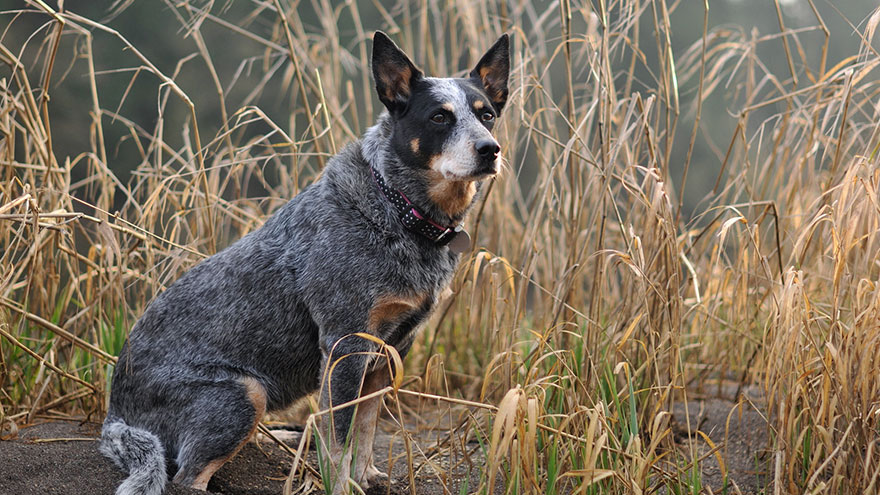Diseases of Australian Cattle Dogs
The Australian cattle dog is an intelligent, hardworking dog. One of its ancestors is the wild Australian dingo, and those genes can still be seen in the Aussie’s naturally athletic body and short, straight coat. The Australian cattle dog is generally healthy, with a lifespan of 10 to 13 years, but due to their active lifestyle they are prone to joint problems and should receive regular veterinary check-ups.
Canine Hip Dysplasia
Canine hip dysplasia (CHD) occurs in Australian cattle dogs due to genetic, nutritional and environmental factors, according to petmd.com. As CHD progresses the hip joints gradually deteriorate until the hip can no longer function. The nature of the Australian cattle dog is to be active, athletic and hardworking. Unfortunately, these habits can create or worsen hip dysplasia. Symptoms of CHA depend on the degree and duration of the disease but include a decrease in activity; difficulty in rising, jumping, running or climbing stairs; hind-limb lameness; a swaying gait that may resemble “bunny hopping”; loss of muscle mass in the the thighs; and evidence of pain.
Diagnosis is reached through a physical examination, blood chemical profile, review of parentage and x-rays. Treatment for CHD depends on the size and function of your dog as well as the progression of the disease. Physiotherapy, physical therapy, weight management, surgery and pain management may all be indicated.

Elbow Dysplasia
Elbow dysplasia leads to degeneration or malformation of the elbow. It can be caused by four different development abnormalities as well as nutritional and environmental factors. Like hip dysplasia, elbow dysplasia can be aggravated by the active lifestyle of this breed.
Symptoms of elbow dysplasia include elbow or forelimb lameness, pain, holding the limb away from the body, fluid and swelling in the joint and decreased range of movement. X-rays, CT scan, MRIs, fluid samples, arthroscopic and physical examinations may be needed for a thorough diagnosis. Surgery followed by range-of-motion exercises, weight management and physical therapy is the typical treatment for elbow dysplasia.
Deafness
Deafness typically occurs in senior Australian cattle dogs. It can be caused by swelling of the outer or middle ear, ear canal disease, degenerative nerve disease, anatomical abnormalities, trauma, tumors or a ruptured ear drum. Working Australian cattle dogs are susceptible to traumas related to herding cattle, such as being kicked in the ear or head.
Symptoms of deafness include being unresponsive to sounds, commands or loud noises. A health history of your dog, including any drugs it may have been given, bacterial cultures and hearing tests will be utilized for a diagnosis. Unless the hearing loss in your Australian cattle dog is caused by a treatable disease, it cannot be cured.You can care for your dog by securing a safe environment for it.
You Might Also Like :: How to Cure Mycoplasma in Dogs

